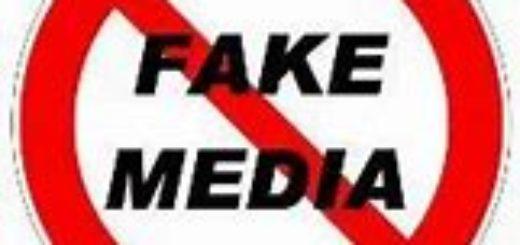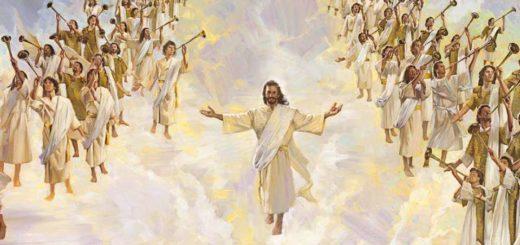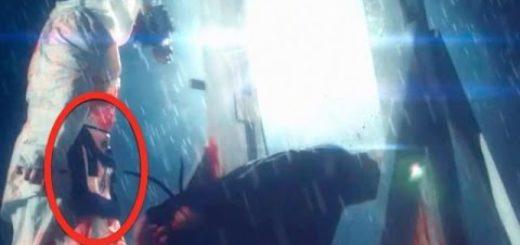Financial podcasts have been featuring ominous headlines lately along the lines of “Your Bank Can Legally Seize Your Money” and “Banks Can STEAL Your Money?! Here’s How!” The reference is to “bail-ins:” the provision under the 2010 Dodd-Frank Act allowing Systemically Important Financial Institutions (SIFIs, basically the biggest banks) to bail in or expropriate their creditors’ money in the event of insolvency. The problem is that depositors are classed as “creditors.” So how big is the risk to your deposit account? Part I of this two part article will review the bail-in issue. Part II will look at the derivatives risk that could trigger the next global financial crisis.
From Bailouts to Bail-Ins
The Dodd-Frank Wall Street Reform and Consumer Protection Act of 2010 states in its preamble that it will “protect the American taxpayer by ending bailouts.” But it does this under Title II by imposing the losses of insolvent financial companies on their common and preferred stockholders, debtholders, and other unsecured creditors, through an “orderly resolution” plan known as a “bail-in.”
The point of an orderly resolution under the Act is not to make depositors and other creditors whole. It is to prevent a systemwide disorderly resolution of the sort that followed the Lehman Brothers bankruptcy in 2008. Under the old liquidation rules, an insolvent bank was actually “liquidated”—its assets were sold off to repay depositors and creditors.
In an “orderly resolution,” the accounts of depositors and other creditors are emptied to keep the insolvent bank in business. And even if you are getting only a few cents a month on your deposits, you are a creditor of the bank. As explained in a December 2016 article in the University of Chicago Law Review titled “Safe Banking: Finance and Democracy:”
A general deposit is a loan made to a bank. This means that the bank is the general depositor’s debtor, but that the bank has legal title to the funds deposited; these funds may be commingled with the bank’s other funds. All the general depositor has is a general, unsecured claim against the bank …. [T]he bank is free to use the deposit as it sees fit. [Emphasis added.]
Fortunately, bail-ins do not apply to deposits under $250,000, which are protected by FDIC insurance. That is true in theory, but as of September 2021, the FDIC had only $122 billion in its insurance fund, enough to cover just 1.27% percent of the $9.6 trillion in deposits that it insures. The FDIC also has a credit line with the Treasury for up to $100 billion, but that still brings the total to just over 2% of insured deposits.
If just one or a few banks become insolvent, the FDIC fund should be sufficient to cover the insured deposits (those under $250K). But under the 2005 Bankruptcy Act, derivatives creditors (which are considered “secured”) are first in line to recover the assets of a bankrupt bank; and the Dodd-Frank Act followed that practice. So if a bank with major derivatives risk collapses, there might be no bank assets left for the non-insured creditors; and a series of major derivative cross-defaults could wipe out the whole FDIC kitty as well.
As of May 2022, according to the most recent data from the Bank for International Settlements (BIS), the total notional amounts outstanding for contracts in the derivatives market was an estimated $600 trillion; and the total is often estimated at over $1 quadrillion. No one knows for sure, because many derivatives are “over the counter” (not traded on an exchange). In any case it is a bubble of ominous size, and pundits warn it is about to pop. Topping the list of U.S. derivatives banks are J.P. Morgan Chase ($54.3 trillion), Goldman Sachs ($51 trillion), Citibank ($46 trillion), Bank of America ($21.6 trillion), and Wells Fargo ($12.2 trillion). A full list is here.
The FDIC and Disclosure
On Nov. 9, 2022, the FDIC held a 3.5 hour webcast discussing the bail-in process among other topics. In a clip raising alarm bells in the alternative media, Donald Kohn, former vice chairman, Board of Governors of the Federal Reserve System, said, “…it’s important that people understand they can be bailed in. But you don’t want a huge run on the institution. But they’re going to be…”
Richard J. Herring, co-director of The Wharton Financial Institutions Center said, “I would think your strategy ought to be to disclose as much as possible to people who professionally need to know about it …”
Gary Cohn, former director of the National Economic Council, said, “I almost think you’d scare the public if you put this out — like, ‘Why are they telling me this? Should I be concerned about my bank?’ … I think you’ve got to think of the unintended consequences of taking a public that has more full faith and confidence in the banking system than maybe people in this room do …we want them to have full faith and confidence in the banking system. They know the FDIC insurance is there, they know it works, they put their money in, they get their money out…”
This was followed by some laughter, which critics have interpreted as a cynical agency warning the wealthy while leaving the smaller investors to eat the losses, similar to the phone calls to the favored few before the 1929 stock market crash. But the clips have to be taken in context. Here is that whole section (taken from the video transcript beginning at 1 hr. 15 min):
SUSAN BAKER (Division of Complex Institution Supervision and Resolution): … So what we want to think about today is, “What should we be transparent about now that would help improve confidence in the event that we’re called to use our Title II authorities?”…
RICHARD J. HERRING (Co-Director, The Wharton Financial Institutions Center and Professor of Finance, The Wharton School, University of Pennsylvania): I would think your strategy ought to be to disclose as much as possible to people who professionally need to know about it, and that would certainly include the ratings agencies and the people within the banks who are responsible for these judgments, and simply have publicly available a place where people can go if they need to know more; because we’re dealing with a society where people are getting their information in tweets. There’s just no patience I think for going through the elaborate and careful planning that has gone on. It should be accessible when people need to know but I don’t think you have much hope of reaching a public that doesn’t have a professional need to know.
MEG E. TAHYAR (Partner and Co-head of Financial Institutions, Davis Polk LLP): … I do think there’s more that could be put out in the public … in a way that isn’t scary to folks. I mean … There’s a timing question, right? We’re at a delicate moment now, so if it goes out tomorrow it might have a different impact than if … it goes out as we’re moving out of the recession. But I’m very big on transparency. I think transparency leads to accountability.
DONALD KOHN (Former Vice Chairman, Board of Governors of the Federal Reserve System and Senior Fellow, Economic Studies Program, Brookings Institution): … It’s a little bit conflicted, right? I mean it’s important that people understand they can be bailed in, but you don’t want a huge run on the institution. But … they’re going to be ….
MICHAEL J. HSU (Acting Comptroller of the Currency): … I think we have to sit down and talk to long-term debt investors and make sure that they as a stakeholder group fully understand. Bank debt today is not what it was before. It is not principal protected, by design.
The FDIC staff were engaged in the delicate act of balancing the need to inform the public against the risk that the disclosure itself could trigger a systemic collapse due to widespread bank runs. The “need to know” stakeholders were the long-term investors with more than $250,000 in the bank, whose funds would be at risk. But smaller depositors, who would be protected by FDIC insurance, might panic from mischaracterized tweets and precipitate the very run the FDIC staff were trying to avoid. To their credit, they were trying to be transparent and accountable; it does seem the public should know what risks are hidden in the economy. The first step to solving the problem is understanding what is going on.
Bank Runs and Systemic Risk
Not just the speculative investments of the SIFIs but bank runs themselves are systemic risks. Nationwide bank runs were the sort of “disorderly resolution” seen in the Great Depression of the 1930s.
In 1913, the Federal Reserve became the settlement agent for private banks, and settlement funds for clearing transactions were held in gold. The Fed was required to hold gold reserves valued at 40% of the Federal Reserve Notes (paper dollars) it issued, and to redeem withdrawals in gold at a fixed price. The reserves were sufficient to backstop withdrawals in normal times, but the years following the 1929 stock market crash were not normal times. Domestic and foreign depositors rushed to withdraw their gold; the banks ran out; and they had to close their doors.
In 1933, Pres. Franklin D. Roosevelt declared a national bank holiday; and when the banks reopened, domestic deposits were no longer backed by gold. They were backed only by the “full faith and credit of the United States.” But that is actually quite solid backing, something neither gold nor cryptocurrencies can claim to have. You can’t pay your electric bill or your credit card bill with gold or cryptocurrency. People are willing to accept dollars in payment because they know vendors will take them, and so will the IRS.
After 1933, the funds held at the Fed for settling transactions became simply data entries called “reserves,” which were created by the Fed and held by the banks in Fed accounts. Most of the circulating money supply is now created by private banks by writing loans as deposits into the accounts of their borrowers. But banks cannot create the reserves needed to clear withdrawals through the central bank. Those reserves must be acquired from the Fed, either directly or from another financial institution that has acquired them. Besides the bank’s own incoming deposits, options include borrowing from other banks in the fed funds market, the Fed discount window, or the repo market. Until recently, depository banks could borrow from each other or the Fed at 0.25%. That rate has now gone up to 4.5-4.75%. The only cheap, readily available source of liquidity left to a bank today is its own pool of incoming deposits, from paychecks, credit card payments, mortgage payments and the like.
Traditionally, banks had to hold only about 10% of their deposits in reserve. That percentage was considered sufficient to cover transfers and withdrawals because most people left their money in the bank, and withdrawals were largely netted against incoming deposits. In March 2020, the Fed removed the reserve requirement altogether; but banks still need to hold enough reserves to meet withdrawals. With a reserve of only the standard 10%, however, they will not have enough liquidity (readily accessible funds) to meet a nationwide bank run of the sort seen in the early 1930s.
The FDIC is therefore right to be concerned about warnings that can be misinterpreted. Distrust of big banks is rampant today, but collapsing them suddenly through a “disorderly” nationwide bank run would be as catastrophic as it was in the 1930s. Before the FDIC was founded through the Banking Act of 1935, depositors routinely lost their money when their banks went bankrupt. But we don’t want to lose our deposits to a bail-in either. Better would be for the regulators to unwind the speculative SIFI bets in a “soft landing” if possible. More on that in Part II of this article.
Meanwhile, the banks clearly need our deposits, and today they are scrambling to compete for deposits and reserves. According to a Feb. 7 article on Wall Street on Parade, Goldman Sachs is now offering an interest rate on its savings accounts that is 350 times the interest rate being offered by JPMorgan Chase and Bank of America. Why isn’t stated, but both of those major competitors have already amassed huge deposit bases. When the Global Financial Crisis hit in 2008, Goldman was an investment bank like Lehman Brothers, which barely escaped Lehman’s fate by becoming a bank holding company. This allowed it to acquire deposits and gave it access to the Fed’s discount window, but it obviously came in late to the deposit-collecting game.
How, Then, to Protect Your Deposits?
One popular alternative is to move your money to a credit union. With respect to deposit insurance, according to the FDIC, credit unions are no safer than banks, but they are also no less safe. Whether the institution is insured by the FDIC or by the National Credit Union Share Insurance Fund (NCUSIF), your deposits are guaranteed up to the $250,000 limit per depositor. More to the point here, credit unions and other small local banks are not subject to bail-ins.
Some commentators recommend moving your money out of the banking system altogether – into cash, cryptocurrencies or precious metals. Having enough cash on hand to cover perhaps three months’ worth of expenses in a crisis is certainly a good idea. But many people don’t have even that much in savings, and people with large sums in the bank probably won’t be able to withdraw them all at once. Changing banks is also a slow and cumbersome process. Many people won’t do it or will be caught unaware when the next crisis hits.
In theory, the Federal Reserve could step in as lender of last resort to save the creditors and depositors if necessary, calling on the same emergency powers it exercised for the SIFIs in 2008-09. It could provide cheap liquidity for the banks in the form of quantitative easing, alleviating the need to bail in depositor funds. The Fed is not required to act – it is “independent” – but that means it does not need authorization from Congress, and it does not need taxpayer funds. It can create its own reserves.
The question is whether the Fed would see depositors as “systemically important,” but the rush to compete for deposits shows that they are. Arguably deposits are the people’s weapons of mass destruction: pull them and the banks go down. The banks need our deposits; and we need the sort of self-sustaining financial system in which money, credit and banks are treated as public utilities, accessible by and accountable to the people whose full faith and credit backs them.
Part II of this article will look at the systemic risks currently facing the banking system, and at how it could be reengineered to deal with those risks and restore the trust of the people sustaining it.
This article was first posted on ScheerPost. Ellen Brown is an attorney, chair of the Public Banking Institute, and author of thirteen books including Web of Debt, The Public Bank Solution, and Banking on the People: Democratizing Money in the Digital Age. She also co-hosts a radio program on PRN.FM called “It’s Our Money.” Her 400+ blog articles are posted at EllenBrown.com.
Filed under: Ellen Brown Articles/Commentary | Tagged: bail-in, bailout, Bank of North Dakota, bank runs, Dodd-Frank, Ellen Brown, FDIC, Federal Reserve, public banking, quantitative easing, systemic risk |














jcjc, on February 25, 2023 at 9:10 pm said:
Can stocks in a personal trading account linked to a bank also be taken in the case of a bail-in?
Ellen Brown, on February 27, 2023 at 3:49 pm said:
That’s a good question. Read the fine print on your trading account. They typically allow for “overnight sweeps” into big banks to earn a little interest, and bankruptcies tend to happen at night or on the weekend. You can probably opt out of the sweeps though. Best to contact your broker and ask.
douglasjack, on February 25, 2023 at 10:03 pm said:
INDIGENOUS versus EXOGENOUS ECONOMY
I’m not sure I’ve got my metaphors right, but if a “Bail-out” (French ‘Baille’ = ‘bucket or pail’) refers to Bailing-out the water of a boat so it can regain floatation, then does a “Bail-in” means using the bucket to fill-up & sink the boat?
The real dysfunction is oligarch owned centrally issued fake ‘money’ (Greek ‘mnemosis’ = ‘memory’), which as a colonial ruse for paranoid command & control, in every failed extracted & exploited ‘exogenous’ (Latin ‘other-generated’) violent empire for the last 7000 years since Babylon’s capture & abuse. Empire gains its power through its system of anonymous amnesia. Previously all humanity’s worldwide ‘indigenous’ (L. ‘self-generating’) ancestors employed the Bottom-up time-based, equivalency accounting of the String-shell whole Value system (eg. Wampum on Turtle-Island/N. America, Quipu in S. America, Cowrie in Europe, Asia, Africa & Australia) in Relational Economy. https://sites.google.com/site/indigenecommunity/relational-economy
All humanity’s worldwide sustainable ‘indigenous’ ‘economy’ (Gk. ‘oikos’ = ‘home’ + ‘namein’ = ‘care-&-nurture’) is based in intimate, loving, intergenerational, female-male, critical-mass, economies-of-scale ‘fractal’ (‘fraction, multiplier, building-block, where-the-part-contains-the-whole’) ‘memory’ for all goods & services contributions to the ‘Domestic’ economy. Industry & commerce are considered as subsets serving this essential humane lived home experience. https://sites.google.com/site/indigenecommunity/relational-economy/extending-our-welcome-participatory-multihome-cohousing
The first fractal is the ~100 (50-150) person Multihome-Dwelling-Complex (eg. Longhouse-apartment, Pueblo-townhouse & Kanata-village), where even a child of three would recognize the sounds of voices & sights to know someone of his kin developing Economic-Memory. The human body’s cells, tissue & organs function with neural-memory, decision-making & autonomous informed specialization throughout coordinated as a whole. Indigenous economy on a personal, local to worldwide scale had the same fractally distributed sovereign nature. https://sites.google.com/site/indigenecommunity/structure/3-economic-memory
Today 70% of people live in Multihomes both here on Turtle-Island (N. America) & worldwide in an average 32 dwelling units = ~100 people. 20% of Multihome-dwellers are extended family members, living intentionally in proximity for social & economic collaboration as well as for individual & family privacy. The average Multihome today earns & spends between one & twenty million dollars as well as having a building/land/infrastructure value of roughly the same. Indigenous rational systems empower all people in Circular-Economy from the bottom-up, so as to be powerful at every fractal level of human society with humane recognition-memory associated accounting at the base of all relations. https://sites.google.com/site/indigenecommunity/relational-economy/participatory-accounting
Ellen Brown, on February 27, 2023 at 3:51 pm said:
Not sure I’m following what you’re saying, but good metaphor on bailing in!
Feb 26, 2023 – Situation Report: The World, on February 25, 2023 at 10:16 pm said:
[…] What Will Happen When Banks Go Bust? Bank Runs, Bail-Ins and Systemic Risk, by Ellen Brown […]
Roger Calven, on February 26, 2023 at 7:20 am said:
I watched the Dodd Frank come into play – a typical British financial back-up to loot people of their painfully earned finances – deprive them of a future. I believe that U.S. or Chinese Government bonds could be more protection than the banks. What we project into the future for our species development is much more important then saving the dead imperial financial system . Hamilton paved the way for accomplishing that. Now the British type thinkers find it necessary to assassinate the American citizens, as they did Hamilton, continue with a plan to set in motion their Great Green Reset.
Spencer Hall, on February 26, 2023 at 8:16 am said:
The bank runs of the Great Depression occurred because the banks had insufficient collateral in which to discount to the FED and the banks didn’t have the hard currency (there was insufficient specie), in which to give their depositors.
Richo, on February 26, 2023 at 1:51 pm said:
“More to the point here, credit unions and other small local banks are not subject to bail-ins.”
Could you expand on this?
Ellen Brown, on February 27, 2023 at 4:00 pm said:
The FDIC said credit unions were no more nor less safe than banks, because both have insurance protection up to $250K. But it didn’t address the bail in issue. Only SIFIs are subject to bail ins, so your small local bank is probably as safe as your local credit union; and even big banks are ok so long as the FDIC fund has enough in it to cover your $250K or less in deposits. Problems would come if there is a major systemic collapse that wipes out the fund.
Spencer Hall, on February 26, 2023 at 3:27 pm said:
As FDIC Chairman Sheila Bair complained: “Sellers of derivatives still have ‘no skin in their game’ & excessive concentrations”… “a culture, and Congress, that celebrates exploitation of an unwitting public for the sake of a fast buck” where the bankruptcy code gives derivative sellers preferential treatment allowing them to take ownership of their higher-quality assets as collateral before proceedings.
Does the new law require that purchasers of CDS have an insurable interest? NO. I.e. as SA author Kurt Dew says, it’s a speculators game, one that could grow to an astronomical size, as speculators are free to bet against default on a wide range of securities without actually owning any of them (as was the case in with MBS and CDO losses in 2007). If hedge fund managers who made money if mortgages defaulted were required to hold more securities than CDS protection, then they would not have had an incentive to oppose loan modifications.